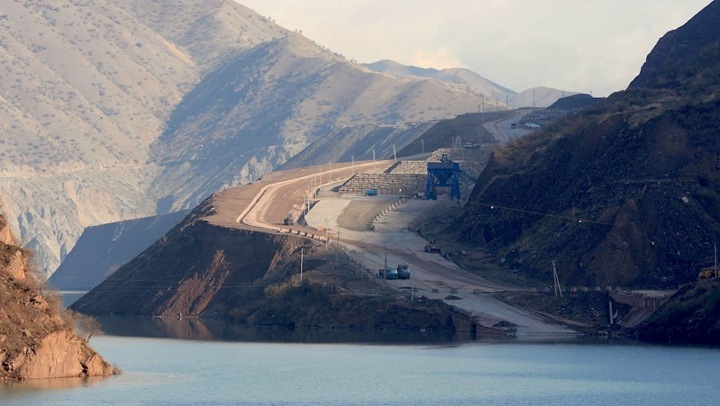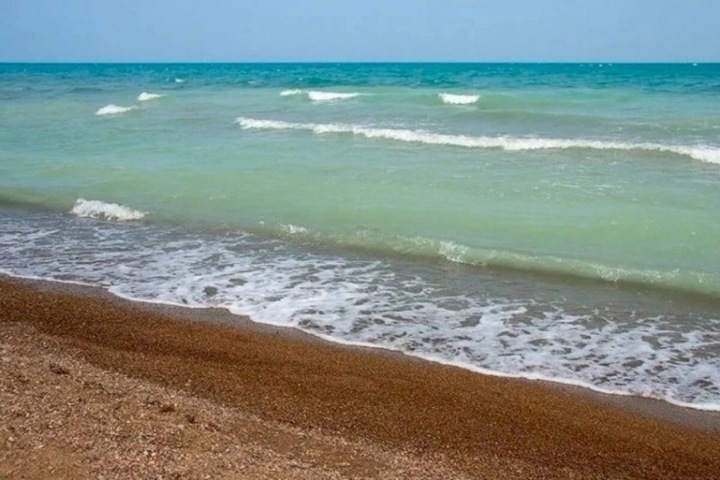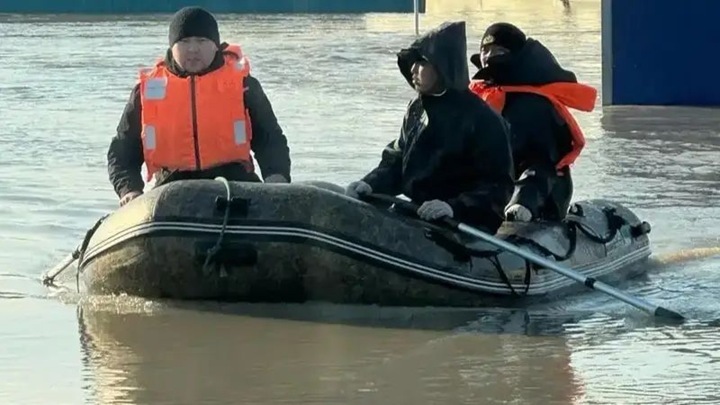Rogun Dam opens the way to support megadams around the world
Despite the ongoing criticism, the World Bank has approved the Rogun Dam project, the first of five large dam projects expected to receive its support in the coming months. Climate change has increased the need for renewable energy sources, but the environmental and social costs of building such large-scale projects remain.

After a decade of refusing to finance large hydroelectric power plants, the World Bank is returning to this business on a large scale.
During the last half of the twentieth century, the World Bank was the world’s leading sponsor of large hydroelectric power plants. But in the last two decades, its activities have been following a zigzag pattern: supporters and critics of dams within the institution alternately determined the policy in the field of hydropower. In the last 10 years, critics concerned about the enormous social and environmental costs of large dams and the long construction time seem to have dominated, and the bank has supported only one new project of a large hydroelectric power plant.
But earlier this week, the bank’s board of directors approved a scheme according to which the bank will become the lead financier of a $6.3 billion project to complete the construction of the Rogun Dam in Tajikistan. This often-thwarted project, begun in 1976, is currently about 30 percent complete. If the dam is fully constructed, it will become both the world’s tallest 1,100-foot dam and one of the most expensive in the world, with a total cost of $11 billion.
The World Bank and officials of the Democratic Republic of Congo are also negotiating the terms of the deal, which will include funding for Inga-3, the third of eight proposed dams in the megaproject known as Grand Inga. Grand Inga is a $100 billion enterprise that will become the world’s largest dam, almost twice the capacity of the Chinese Three Gorges Dam, which is currently the world’s largest hydroelectric power plant, and will potentially provide electricity to a significant part of the African continent. In addition, the dam will change the hydrology of the second largest river in the world, the Congo, which, according to opponents, is harmful to the environment.
In addition, in April last year, the bank “agreed in principle” to lead a consortium of international and regional banks financing the construction of one of Nepal’s largest dams on the Arun River worth $ 1.1 billion. The dam, dubbed “Upper Arun”, is financed by Indian companies, and its electricity is intended for export to India. But Nepal is already fed up with hydropower, and, as the Kathmandu-based newspaper My Republica reported in October, it has been losing a huge amount of electricity generated for several years due to inadequate power lines. In addition, the Upper Arun Dam is being built in a region that is very vulnerable to earthquakes and floods caused by the destruction of ice dams on glacial lakes.
The bank’s role in these projects marks a dramatic change in its approach to hydroelectric dams. “Rogun and Inga are the largest dams in the world, we have not seen such a scale for several decades,” says Josh Klemm, co–executive director of International Rivers, a river protection NGO based in Oakland, California. From 2014 to this year, the bank has supported only one new large hydropower project – Nachtigall in Cameroon. However, between this week and mid-2025, the bank’s board of directors is likely to approve the financing of five large dams, including Rogun and Ingu-3.
We are witnessing a large-scale step [The World Bank] is considering financing a number of major projects that are expected to have a huge impact on river basins or have already caused great historical controversy,” Yevgeny Simonov, coordinator of the Rivers Without Borders International Coalition and a researcher at the University of New South Wales in Canberra, said in an interview. “The World Bank is returning to projects that it once abandoned due to obvious problems and risks, but these risks have not gone away.”
In response to questions, representatives of the World Bank said: “There have been no changes in the policy of financing hydropower.” However, it is becoming increasingly clear that hydropower is an important component in promoting clean energy investments,” the statement said, referring to the potential of hydropower as a complement to solar and wind energy.
Supporters of hydropower argue that dams can generate huge amounts of renewable energy in countries where the majority of the population does not have electricity.
The World Bank has been supporting hydropower intermittently since the late 1990s, when the social and environmental controversy caused by its efforts to build dams prompted the bank to convene an investigative body – the so–called World Commission on Dams – of 12 independent experts to make recommendations on the proper planning, design and construction of large dams. But the World Bank found the commission’s recommendations, issued in 2000, so restrictive that it rejected them. Instead, he adopted a “High Risk/high reward” policy that fully supported large hydropower. But the bank backed down when its dams again caused controversy. In 2013, the bank tried again to support large hydroelectric power plants, but then retreated until 2018, when it relaxed its social and environmental standards for such projects.
“We believe that the newly discovered love of the bank for large hydropower reflects the desire of Ajay Bangui, the president of the bank since June 2023, to start his term with high-profile events, even if this means forgetting about environmental and social problems that previously excluded the possibility of implementing projects,” says Klemm.
However, according to experts, bank officials seem to be downplaying the importance of hydropower in their plans, noting that they may not want to draw attention to the high costs of building dams at a time when President-elect Donald Trump is probably considering ending US support for the bank. The collection of controversial nationalist policies “Project 2025”, compiled by advisers close to Trump, says that the new administration “should withdraw from the World Bank and the International Monetary Fund and stop its financial contribution to both organizations.” The United States is the bank’s largest contributor.
Regardless of how many of these projects will lead to the construction of dams, experts believe that the bank’s participation will not change the current trajectory of the global dam construction industry for many obvious reasons. These include the enormous initial costs of building dams, after which it is necessary to wait a decade or more before the revenues from electricity begin to flow; destruction of fish stocks and river ecosystems; displacement of 80 million people worldwide, according to the most conservative estimates, and damage to the livelihoods of another half a billion people; significant methane emissions from some reservoirs; a sharp reduction in energy production when drought, which is becoming more widespread due to climate change, is emptying reservoirs, as is currently happening in southern Africa and other countries; and, seemingly a coup, a decrease in their competitiveness compared to increasingly cheaper wind and solar installations.
Despite all this, supporters of hydropower argue that this technology is capable of generating a huge amount of renewable energy in countries where most people do not have electricity at all. If earlier representatives of the industry promoted their projects as critically important for the economic development of countries or regions, now they say that hydropower can complement solar and wind energy.
Non-governmental organizations involved in river protection, such as International Rivers, argue that the bank’s “seal” gives an unjustified shine to the industry, encouraging other regional and international banks to support even more dam projects. “We are writing to express our collective alarm about the noticeable surge in the World Bank’s proposed and recent support for large–scale hydropower development,” reads a nine-page letter sent to the bank’s executives on October 23 and signed by more than 100 environmental NGOs from around the world. The letter called on the bank to stop investing in almost all hydropower projects. The bank responded quickly but fluently, confirming its “partnership” with the NGO, but not responding to the points of the letter.
Rogun and Bolshaya Inga have been a magnet for controversy for several decades. Tajikistan is a hotbed of rivalry in Central Asia, where Western, Arab, Russian and Chinese interests are competing for political and economic leverage; one way for Europe and the United States to gain influence over Tajikistan’s leaders is to help them build the world’s tallest dam. Supporting the Rogun Dam could be a particularly effective tactic, since the project is very popular in Tajikistan and, according to Simonov, the country’s leaders are “obsessed” with the dam. According to the World Bank document, one of the drawbacks of the Rogun Dam is that it will lead to the resettlement of 50,000 to 60,000 people. According to Simonov, engineering firms have proposed alternative plans to build a dam that would be 115 feet lower and would allow up to 30,000 people to be resettled. According to Simonov, officials rejected these plans because they were primarily interested in prestige, which, in their opinion, should be ensured by the construction of the world’s tallest dam.
In the period from 2033, when it is planned to complete the construction of the Rogun Dam, until 2039, when its reservoir will be filled, the dam will begin to generate electricity and, according to an assessment prepared for the bank’s board of directors, “will bring significant benefits to domestic and regional well-being, will contribute to the decarbonization of regional power grids in Central Asia and potentially transform the economy.” Tajikistan”. For Tajiks, the immediate interest is that the dam should eliminate power outages that disrupt heating during cold winters in the country. The catch is that the water that will turn the turbines of the Rogun power plant in winter will be diverted from the Vakhsh River in summer, which means that it will no longer flow to farmers and other people who depend on it in Afghanistan, Turkmenistan and Uzbekistan, according to Simonov. Rogun also seriously threatens the Tigrovaya Balka Nature Reserve in Tajikistan, a UNESCO World Heritage Site, because it permanently eliminates floods necessary to maintain floodplain forests, environmentalists say. And by the time the dam is completed, the NGO said in a letter sent to the World Bank on October 23, other renewable electricity options are projected to be much cheaper.
In the World Bank’s assessment of the Rogun Dam, the overall risk of the project was classified as “high”. Among the risks listed are the limited experience of Tajik officials, which has led to delays in design and construction, as well as “technical and dam safety issues”; the impact of the project on public debt; low performance of Tajikistan’s electricity sector, which may limit revenues from electricity sales; and the location of the project in an active seismic zone.
Like the Rogun Dam, the Grand Inga project in the Democratic Republic of the Congo has a complicated history. After the construction of the Inga-1 and Inga-2 dams in 1972 and 1982, respectively, only every fifth Congolese is provided with electricity by bad dams, and this condition will not change the construction of the Inga-3 dam at a cost of more than $ 14 billion. Of Inga-3’s huge projected capacity of 11,000 megawatts, 5,000 will be exported to South Africa (after the construction of power lines worth another $4 billion); 3,000 will be sent to mining companies in Katanga Province 1,700 miles from the DRC; and the rest will be used to improve the reliability of electricity supply to Kinshasa, the country’s capital. Rural residents will continue to do without electricity.
A study comparing more environmentally friendly energy alternatives to Inga-3, published in the journal Environmental Research Letters in 2018, suggests that the dam is impractical from a financial point of view. It concludes that in most scenarios, “the combination of wind, solar photovoltaic energy and a certain amount of natural gas is more cost-effective than Inga-3.” Since the appearance of the study, the cost of solar and wind energy has only decreased.
Jacques Leslie (YALE E360) — translation into Russian: “Vidkriti lis”


